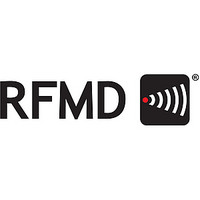RF2958 RF Micro Devices, RF2958 Datasheet - Page 9

RF2958
Manufacturer Part Number
RF2958
Description
2.4GHz SPREAD-SPECTRUM TRANSCEIVER
Manufacturer
RF Micro Devices
Datasheet
1.RF2958.pdf
(20 pages)
Available stocks
Company
Part Number
Manufacturer
Quantity
Price
Part Number:
RF2958
Manufacturer:
RFMD
Quantity:
20 000
Company:
Part Number:
RF2958SR
Manufacturer:
RFMD
Quantity:
15 500
Company:
Part Number:
RF2958TR13
Manufacturer:
ICS
Quantity:
60
Part Number:
RF2958TR13
Manufacturer:
RFMD
Quantity:
20 000
www.DataSheet4U.com
The RF2958 is a single-chip transceiver designed specifically for IEEE 802.11b wireless LAN applications. In addition to
typical transceiver functions of RF conversion of both the transmit and receive signals, the RF2958 incorporates a low-
noise amplifier (LNA) and a dual phase-locked loop (PLL) frequency synthesizer to reduce end-product component
count and to simplify integration into end-products. The RF2958 uses a superheterodyne frequency conversion architec-
ture in both the transmit and receive signal paths for superior performance in 802.11b applications. It also incorporates
power conservation functionality to increase battery life in portable and mobile applications. When used with the RF3002
baseband processor and RF5189 power amplifier (PA), the RF2958 is part of a complete PHY solution for 802.11b appli-
cations (see figure below, 2.4GHz IEEE 802.11b Chipset Block Diagram).
SYSTEM ARCHITECTURE
The overall system architecture is based around a superheterodyne conversion process. For the transmitter side, the
baseband in-phase (I) and quadrature (Q) signal components are converted to an intermediate frequency (IF) of
374MHz. An external SAW filter is used to filter out undesired spurious frequencies. The IF is then converted to the over-
the-air radio frequency (RF) between 2.412GHz and 2.483GHz using low-side injection. The RF output drives a PA to
amplify the signal to the desired power level at the antenna. Generally the PA is followed by a TX/RX switch and a band
pass filter which eliminates the undesired sideband resulting from the mixing process before broadcasting the signal
through the antenna.
The receiver is the inverse of this process. The signal from the antenna passes through the band pass filter, which is in
this case acting as a pre-selection filter. The received signal passes through the integrated LNA and is converted to an IF
of 374MHz. The signal then passes through a SAW filter, which acts to reject adjacent channels as defined by the
802.11 standard. Due to the bandwidth of this filter, adjacent channels must be at least 20MHz apart. The filtered IF sig-
nal is then downconverted to baseband I and Q components.
The local oscillators required by the mixing process are generated by internal IF and RF PLL frequency synthesizers.
These are controlled through a three-wire serial data interface.
Rev A0 050209
DIVERSITY
ANTENNA
SWITCH
BW = 100 MHz
f
C
= 2450 MHz
RX PE
TX PE
SWITCH
TX/RX
RF5189
RF2958
RF PLL
Theory of Operation
Control Registers
BW = 20 MHz
f
C
Serial Data
PLL/Power
Interface
= 374 MHz
SDI
IF PLL
REF
RX VGC
ANT SEL
RX I
VREF
RX Q
TX VGC
TX I
TX Q
Data Converter
Reference
RF3002
RF2958
TX VGC
RXVGC
I OUT
Q OUT
DAC
ADC
Q IN
ADC
DAC
DAC
DAC
I IN
CCA
Control
Port
Mode Control
Preamble/
Preamble/
802.11
Header
802.11
Header
RX VGC
Tx Length
Tx Signal
Service
11-271
CCA
LNA GS
RX DATA
RX RDY
DATA CLK
SPI
TX RDY
TX DATA
RX PE
TX PE
M CLK












